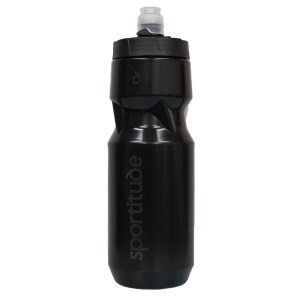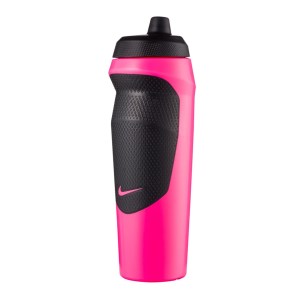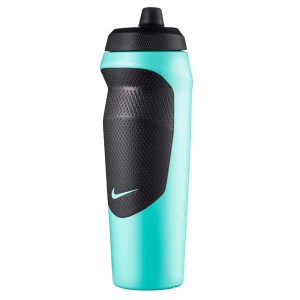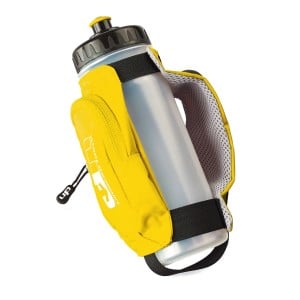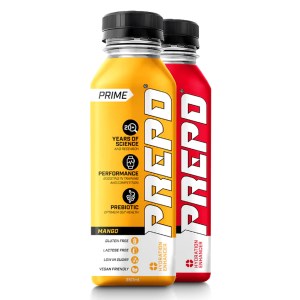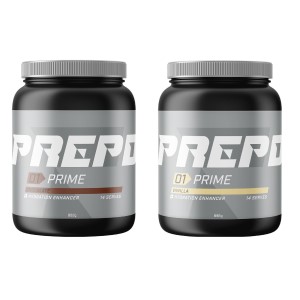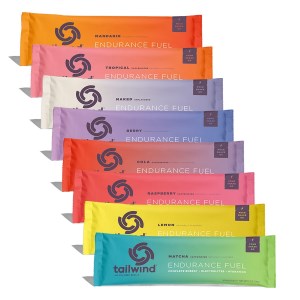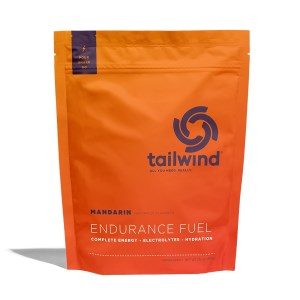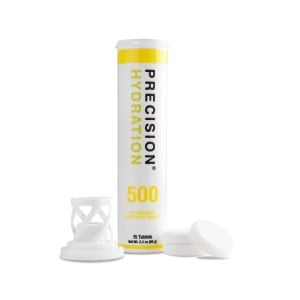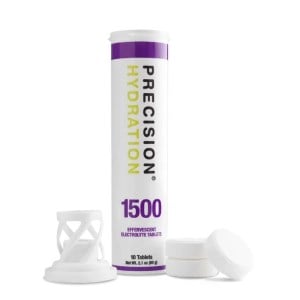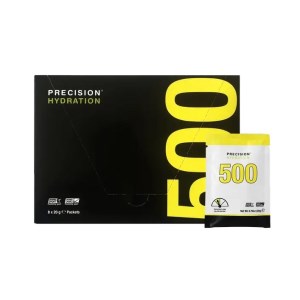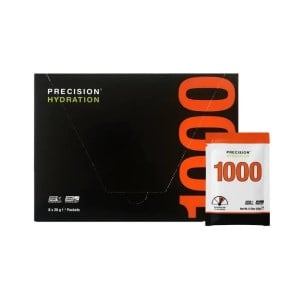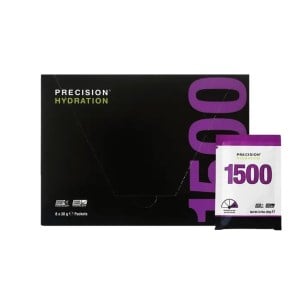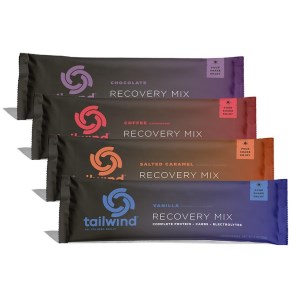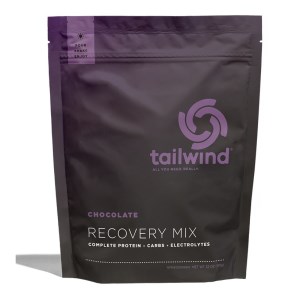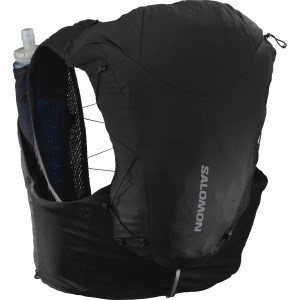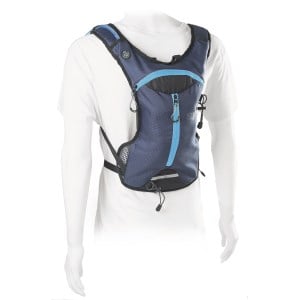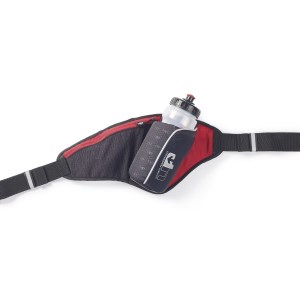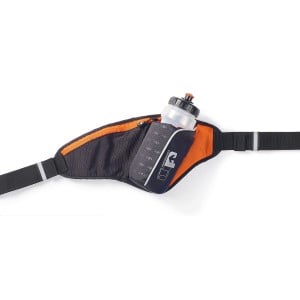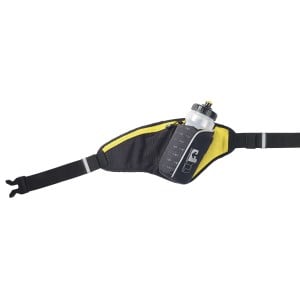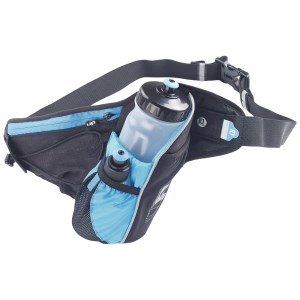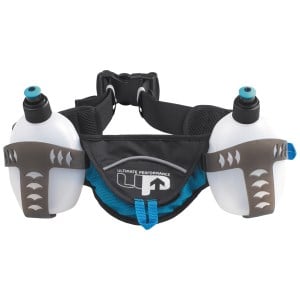How To Hydrate For Short & Long Runs: Everything You Need To Know
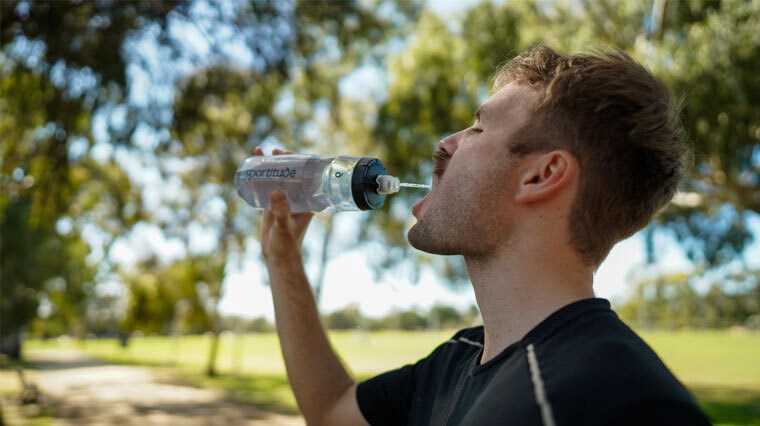
We don’t need to tell you that water is essential to all life on earth. Water is the most critical nutrient you need to survive, playing a vital role in the functioning of every organ, muscle and cell in your body.
How you hydrate or your hydration strategy is something every runner should consider. Your body’s hydration demands differ based on a range of personal factors, including your gender, age and weight, to external factors like the weather, your running clothing and distance.
In this article we’ll be focusing on distance and how it influences the way you hydrate – from hydration timing and the specific fluids you choose to support your performance, to hydration gear.
Why is water important?
Water is purely something you can’t live without. When it comes to running, it supports not only your performance, but your recovery – helping your body return to a pre-workout state.
Water…
- Increases blood volume and aids in the transport of oxygen and nutrient-rich blood throughout your body
- Regulates body temperature to prevent overheating
- Supports cognitive function for improved memory, focus and energy
- Lubricates your muscles and joints
- Supports digestive health
Whether you have an active or stationary lifestyle, you always should have water close at hand. It’s recommended that adult women drink 8 cups (2L) of water a day, and adult men drink 10 cups (2.5L) a day, where 1 cup = 250ml.
Keep in mind this is a baseline, and with increased activity levels or temperature, your water demands also naturally increase. Your physiology, whether you’re pregnant or lactating and other individual factors all contribute to your personal hydration requirements.
Why is sweat important?
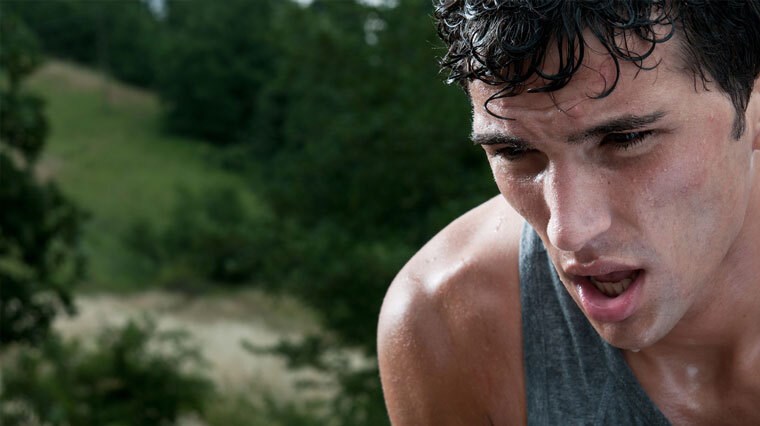
For a quick course on why water and specifically sweating is crucial for running performance, it’s important to know a little bit about how your body works. Muscle movement – whether it’s running, rowing or shooting a netball - generates heat. To avoid overheating, your body must find a way of dealing with its increased core temperature.
Your hypothalamus is the part of your brain responsible for maintaining homeostasis - the stable internal state of your body, including temperature regulation. When the hypothalamus senses your body has surpassed a normal core temperature of 37°C (98.6°F), it triggers increased blood flow to the surface of the skin and a perspiration response from the sweat glands.
This is where sweat is a human ‘super power’. The evaporation of sweat from your skin is a natural cooling mechanism. When the conditions are right, (not overly humid), the water component of sweat converts to vapour, taking its heat with it.
Sweat is mainly composed of the water inside your body, but also contains electrolytes like sodium, calcium, magnesium and potassium – but we’ll discuss these later in the article.
For athletes to stay hydrated and compensate for fluids lost in sweat, it’s important that you – you guessed it – drink water.
For a more in-depth look, the Sweat Rate Test helps to tailor your hydration strategy to your individual needs.
How does dehydration affect your running performance?
Being adequately hydrated isn’t something that your body brings to your attention. Hydration simply puts you at a healthy ‘norm’ – and normal isn’t something we notice or actively perceive.
However, when you’re dehydrated, the symptoms below take hold – and the more severe they are, the more dehydrated you are.
- Mild to excessive thirst
- Dry mouth and tongue
- Headaches
- Feeling dizzy or faint
- Fatigue
- Muscle cramping
- Low urine output and/or dark urine
- Increased heart rate or breathing
- Irritable or disoriented
Thirst, alongside the colour of your urine, are key indicators of your hydration levels. Thirst is typically the first symptom of dehydration, so you want to hydrate before you’re thirsty – and that goes for every day of the week, every day of your life, not just purely in preparation for race day.
If your urine is a light straw to clear colour, this generally means you’re adequately hydrated. Darker shades of yellow suggest your urine is more concentrated, especially when it’s at a decreased volume. This is a symptom of dehydration – with your kidneys trying to conserve the water available in your body.
When you experience any of these symptoms it’s important to slow down and drink up.
Hydrating For Short Runs
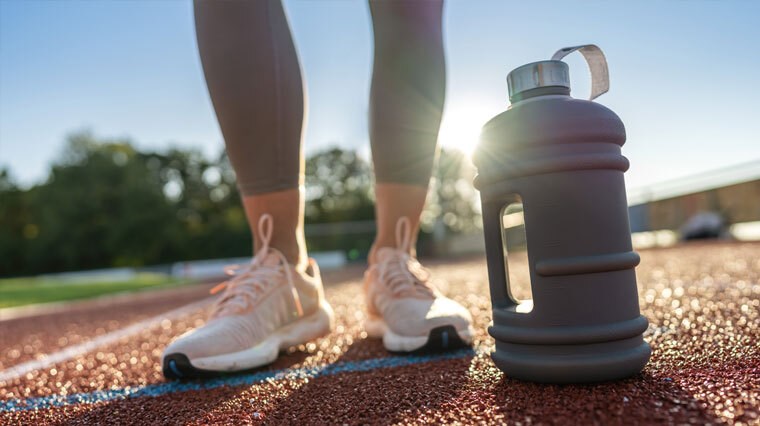
What should I drink for a short run?
Hydration is relatively uncomplicated for shorter runs (45 minutes or under). Simply put, water is best – and in Australia, there’s no need to buy bottled water. Fresh tap water has the same hydration and health benefits, and includes fluoride as an additive to support dental health.
Flavouring water naturally can encourage you to drink up and prevent boredom. Infusing water with a slice or two of lime, lemon, cucumber, berries or fresh mint can take your water to the next level in terms of taste. You don’t have to resort to artificially flavoured, sugar-rich sports drinks, and you can even throw in some ice cubes to make your water more palatable.
Should I bring water on a short run?
Assuming you’re keeping on track of your day-to-day hydration, topping up with 1-2 cups of water about 15 - 30 minutes before your short run is generally enough to satisfy your thirst and to ward off dehydration – although it’s important to take the pace, temperature and your personal requirements into account.
For shorter runs, many runners prefer to run lighter by keeping their hydration at home. When your short run is at an end, be sure to drink about 2 cups of water to top up your fluids lost in sweat to support recovery.
On warmer days, bringing water on your runs is highly recommended. Although it’s not essential to bring water on shorter runs in cooler weather, having it within easy reach is beneficial – no matter the distance or temperature.
How should I carry water on my short runs?
Sports bottle
A drink bottle is ideal as a no-fuss, grab-and-go hydration solution for shorter runs. However, water bottles aren’t created equal – and with plenty of sports bottles on the market, you can make a selection based on your preferences and individual requirements.
Investing in a reusable sports bottle helps to save money and the environment by reducing waste from disposable plastic bottles, which frequently end up in landfill or our oceans.
When shopping for a handheld sports water bottle specifically for running, there are some key components to consider:
- Does it feel natural and comfortable in your hands?
- Is it a practical and functional size and shape?
- Is it durable for frequent use?
- Is it leak-proof?
- Does it have any features that make it easier to drink on the go? (e.g. a spout as opposed to a twist opening only)
To help take the guesswork out of choosing a water bottle for running, we’ve put our top 4 under the spotlight.
Sportitude Thirst Blast BPA Free Lockable Water Bottle - 710ml
The Sportitude Thirst Blast BPA Free Lockable water bottle makes it easy to access and track your hydration with a squeezable and transparent design.
When you're finished drinking up, the lockable lid gives you peace of mind knowing there won't be any spillage when you toss your favourite water bottle in your training bag or backpack.
An easy-to-drink and easy-to-clean mouthpiece makes it a run-ready option. For a motivational boost, RUN FOR IT is printed on the side to encourage you to chase your running goals.
Nike Hypersport BPA Free Sports Water Bottle - 590ml
The Nike Hypersport BPA Free sports water bottle is popular among runners with a textured panel for a natural grip in your hand, anti-leak valve and access to smooth flowing liquid with a quick squeeze. Being dishwasher safe means cleaning it doesn’t have to take time out of your runs.
-
Nike Hypersport BPA Free Sports Water Bottle - 590ml
-
Nike Hypersport BPA Free Sports Water Bottle - 590ml
-
Nike Hypersport BPA Free Sports Water Bottle - 590ml
1000 Mile UP Kielder Handheld Water Bottle - 600ml
The 1000 Mile UP Kielder Handheld water bottle offers a fill up, strap on and go design. This effortless way of securing the sports bottle to your body means you can keep your hand relaxed and don’t have to waste energy holding the bottle in a vice-like grip. Moisture-wicking materials keep your skin dry and fresh, and a zip pouch provides a safe home for keys, energy gels or cards.
1000 Mile UP Running Water Bottle - 580ml
If you prefer a shape that helps the water feel balanced in your hand, the 1000 Mile UP running water bottle is a unique and practical option. Complete with finger grip indents, it feels like a natural extension of your body and is available in a 580ml size that’s just-right for short runs.
Prefer to run hands-free? Check out our suggestions below for hydration options that you wear rather than carry, under our long run hydration gear recommendations.
Hydrating For Long Runs
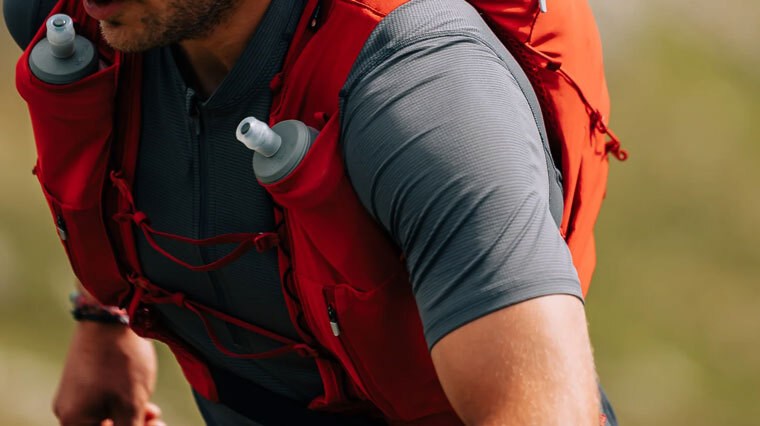
How should I hydrate for a long run?
When running at a higher intensity or longer distance, your body may demand more than pure water to support your performance and recovery.
Let’s rewind time back to the hours… or even days before your long distance run, because your hydration strategy should begin prior to even setting off from the starting blocks.
The days before your run
If you’re competing in a marathon, half marathon or ultramarathon, you’ve likely been training for months – but how you treat your body in the days leading up to the race can have a dramatic influence on your performance on the day. On a training day, you may need to drink 3L of water or more.
Ideally, you’ll be drinking regularly throughout the day rather than drinking a large amount of water in a short period of time. It’s important to be aware that the human body can’t store water – and excess will essentially be flushed out of your body as urine.
PREPD Prime
Triathlete Steve McKenna uses PREPD Hydration - a research-driven formula containing a resistant starch that increases the ability of your large intestine to absorb water. Drinking PREPD Prime the night before your run, during dinner or before bed (10 – 18 hours prior to your workout) means more of the water you drink will go to good use to keep you hydrated.
-
Prepd Prime Pre-Workout Hydration Enhancing Sports Drink - 350ml
-
Prepd Prime Pre-Workout Hydration Enhancing Powder - 14 Serves
The morning of your run
You’ve kick-started your hydration by enjoying PREPD Prime the night before. However, keep in mind, PREPD Hydration products are designed to complement your hydration strategy, not replace it.
On the day of your race, hydrate first thing in the morning to prepare your body for the challenges ahead. Obviously, during your hours of shut-eye, you haven’t had the opportunity to drink so now is the time to fulfil that need.
Hydrating in advance is key. Drinking 2 cups of water (500ml) or a high-quality sports drink with electrolytes 2 hours prior to hitting the starting blocks will help prime your body to perform, and give your body enough time to absorb the fluids.
Avoid the temptation of ‘binge’ drinking water – overcompensating by gulping large amounts of water moments before you lace up. Not only can this lead to needing a bathroom break on-the-run, but it can cause an uncomfortable sloshing in your stomach. To avoid feeling heavy, bloated and low on energy – always drink smart, not fast.
During your run
Drinking at least 2-3 large sips of water every 15- 20 minutes can help maintain your hydration and replenish fluid loss from sweat. This should be equivalent to about 300ml – 800ml per hour.
When training for distance, research-driven sports drinks, energy gels and hydration tablets have earned a place in your running hydration pack. The science behind running nutrition has come a long way – and although pure water is key to life on earth, it doesn’t contain electrolytes.
Electrolytes are essential to your body’s metabolic processes – with calcium and magnesium working together for healthy muscle movement and muscle contractions, and potassium and sodium responsible for maintaining fluid balance in your body.
During your run, like water, electrolytes are lost in sweat. This means electrolyte-boosting products like Tailwind Nutrition Endurance Fuel and Precision Hydration Carb & Electrolyte Drink Mix naturally fit into your hydration strategy as an endurance athlete.
Tailwind Nutrition Endurance Fuel
Tailwind's research-based formulas make it convenient to fulfil your body’s electrolyte demands on-the-go with a ‘just-add-water’ approach that can be prepared in advance. They support your body throughout activity, helping to ward off dehydration, fatigue and muscle cramps.
Tailwind hydration and electrolyte products are extremely popular in the world of endurance racing with their effective, easy-to-drink and gentle-on-digestion formulas - from half marathon, to marathon, to ultra-running.
-
Tailwind Nutrition Endurance Fuel Single Serve Stick - 54g
-
Tailwind Nutrition Endurance Fuel Bag - 810g
Precision Hydration are about meeting your electrolyte and hydration needs, your way.
The new Precision Hydration Electrolyte Capsules are changing the way competitive runners replenish electrolytes. Since all you need is enough water to swallow the capsule to enjoy its electrolyte-boosting benefits, they're a convenient option if you choose to rely on aid stations for hydration on race day. This means you can run lighter, without the need to carry pre-made sports drink when your goal is speed.
If you prefer a more classic method of boosting your electrolytes to sustain endurance efforts, Precision Hydration electrolyte powders and tablets should be on your radar.
Available in PH 500 (moderate), PH 1000 (strong) and PH 1500 (very strong), they allow you to select the option that caters to your individual sweat rate, based on the needs of your body, the intensity of your training sessions and the conditions, such as particularly hot runs.
Precision Hydration Electrolyte Tablets
-
Precision Hydration PH 500 Tube - Moderate - 15 Tablets
-
Precision Hydration PH 1000 Tube - Strong - 10 Tablets
-
Precision Hydration PH 1500 Tube - Very Strong - 10 Tablets
Precision Hydration Electrolyte Power
-
Precision Hydration PH 500 Powder - Moderate - 8x20g Packets
-
Precision Hydration PH 1000 Powder - Strong - 8x20g Packets
-
Precision Hydration PH 1500 Powder - Very Strong - 8x20g Packets
For more in-depth knowledge and advice on electrolytes for endurance runs, check out Ultramarathon Nutrition & Hydration Guide: Carbs, Electrolytes & Caffeine.
Post-run
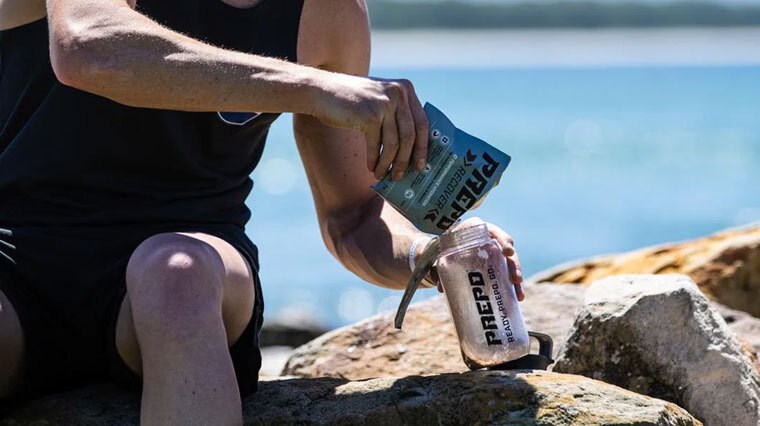
Water is essential to transition into ‘recovery mode’ smoothly – helping transport oxygen and nutrient-rich blood throughout your body, aiding in temperature regulation and reducing risk of muscle cramps and swelling.
Drinking water increases your blood volume – so your heart doesn’t have to work as hard to pump blood where it needs to be, easing physical stress post-exercise.Your digestive system will also thank you for staying hydrated – aiding in nutrient absorption so the carbohydrates and protein you consume post-run can be used by your body effectively. Plain water however isn’t always enough to rehydrate, particularly in runs surpassing 90 minutes.
Prepd Recover supports rapid rehydration in the 24 hours post-workout – helping boost your gut’s absorption of the water you drink, and replenishing key electrolytes.
Drink Prepd Recover as soon as you’ve wrapped up your endurance run and continue to drink water regularly in the hours following exertion. As every runner and every run is different, tailor your post-workout hydration strategy as needed to suit your individual needs and the conditions.
Tailwind Nutrition Recovery Mix
Tailwind keep in mind that to increase performance, recovery is a key priority. They have included Tailwind Nutrition Recovery Mix in their range to give you the full spectrum of recovery benefits that your training demands - from topping up your glycogen stores, to replenishing electrolytes and supporting hydration.
-
Tailwind Nutrition Recovery Mix - Single Serve Stick - 61g
-
Tailwind Nutrition Recovery Mix - Medium Bag - 911g
How should I carry water on my long runs?
Your hydration gear can make or break your long runs. The right gear will keep you running with full mobility and without distractions, while the wrong gear will feel heavy and cumbersome.
It’s about finding that balance – you want to bring everything you need without going overkill on the weight. Materials also make a difference – you want your hydration gear to be durable, while being lightweight and sweat-wicking. Check out these innovative styles crafted with the needs of runners in mind.
Running hydration packs
Running hydration packs and hydration vests are the go-to for trail blazers, competing in ultramarathons and other longer runs – particularly considering that if you’re taking your fitness off-road away from civilization, it’s important to bring along emergency gear. This may include a snake bandage, whistle, additional water alongside running nutrition like energy bars.
Hydration packs typically feature plenty of sleek pockets so you don’t need to leave any essentials behind. If you’re an ultra-runner and space is in high demand, you shouldn’t only consider the amount of litres a hydration pack can carry, but the cargo space or carrying capacity for other gear you may need.
When choosing a hydration running pack, consider the following:
- Would you prefer hydrating with front-access soft flasks or a hydration reservoir (bladder), stored at the back with attached tube and bite valve (mouth piece)?
- The duration and conditions of your run – to determine the amount of water/gear you may need and therefore, the capacity of the pack (e.g. in cold or rainy weather, more storage space may come in handy to stash extra layers).
- The fit – your hydration pack/vest should conform to your body with a stable, personalised fit
The Salomon Advanced Skin 5, Salomon Advanced Skin 12 & Salomon Sense Pro 10 Set trail running packs offer front access to your hydration, with twin 500ml soft flasks that give you access to your fluids with a press. This is a big tick in terms of versatility - meaning you can hold pure water in one flask, and an electrolyte-boosting sports drink in the other.
The Advanced Skin trail running packs also feature easy compatibility with a bladder (not included) to comfortably expand your hydration options.
These are hydration solutions that you wear rather than carry, designed to conform to your body with Sensift technology for a barely there feel. They stabilise the load, free of pressure points. Lightweight and breathable, they meet the demands of your running goals, even when the temperature rises.
With multiple pockets for sleek organisation, they keep you run-ready without ever feeling bulky. Now it's just a matter of choosing the right carrying capacity for you and your next running adventure.
1000 Mile Ultimate Performance Tarn Hydration Pack
The 1000 Mile Ultimate Performance Tarn hydration pack stores water behind you in a 1.5L hydration bladder. It features a hydration tube and soft bite valve for easy drink-and-run access.
Breathable air-mesh back/shoulder straps and ventilation channels offer a distraction-free run, where sweat won’t steal your focus. With heavy-duty rip stop nylon, it’s built to be used regularly to conquer any distance.
Running waistpacks
Running waistpacks that are fitted with hydration options keep your back free to breathe (a real benefit in warm conditions or high-intensity runs), while keeping your essential water and gear close.
Waistpacks are a happy medium between a running water bottle and hydration pack. They usually feature multiple small yet stretchy compartments to give essentials like your energy gels and other running nutrition, keys, cards and phone a safe home on-the-run. Plus, you don’t have to take them off to gain access to your gear – it’s easy to reach or twist around the waistpack for access.
They generally aim for minimalism – offering a lightweight, sleek storage and a hydration solution that hugs close to your waist with an adjustable, bounce-free design. They also leave your torso and shoulders free to move for zero distractions.
When choosing a running waistpack, consider the following:
- Do you prefer carrying a larger single bottle, or two smaller bottles?
- Does it have reflective elements to stand out during your night runs?
- Does it have enough pockets to hold and organise your essentials (e.g. smartphone, keys, cards)
- Does it offer a personalised, adjustable and bounce-free fit?
- Does it have adequate ventilation and/or sweat-wicking fabrics?
- Is the bottle holster insulated?
1000 Mile UP Ribble II Hydration Belt With Water Bottle - 650ml
The 1000 Mile UP Ribble II hydration belt offers a slim and budget-friendly hydration solution, making it a popular choice for walkers and runners. The angled water bottle holster provides smooth and easy access to the included 650ml bottle, while being fully insulated – so you don’t feel the chill of cold liquids against your skin through the fabric.
Sweat-wicking fabrics tick off your boxes for warm weather or high intensity runs and a roomy zipped pocket with internal organiser helps you stay connected – providing a safe and secure spot for your smartphone. A stretchy, elasticated pocket provides a home for running essentials, while keeping the hydration belt sleek against your body. With a cushioned feel, it’s comfortable to wear and to run in.
-
1000 Mile UP Ribble II Hydration Belt With Water Bottle - 650ml
-
1000 Mile UP Ribble II Hydration Belt With Water Bottle - 650ml
-
1000 Mile UP Ribble II Hydration Belt With Water Bottle - 650ml
1000 Mile UP Stockghyll Force v3 Hydration & Nutrition Running Waistpack
The 1000 Mile UP Stockghyll Force v3 is a running waistpack that doesn’t make compromises. It features an insulated bottle holster with included BPA free 650ml bottle and additional 150ml gel bottle to provide a no-fuss solution to your hydration and running nutrition demands.
The 650ml bottle is BPA free and includes finger grips for a natural feel in your hands. The angled bottle holster is designed specifically to give this bottle a bounce-free and secure fit, so you can focus on crushing your PB.
This is the hydration waistpack for serious endurance runners, featuring a spacious zip mesh pocket to stash your smartphone, elasticated pocket, internal organiser and external shock cord to store a light running jacket or running gloves.
An Air Mesh backing allows your skin to breathe in this sweat-prone zone and reflective details increase your visibility.
1000 Mile Ultimate Performance AiraForce 2 Nutrition Belt
With 2 x 300ml bottles side by side, the 1000 Mile UP AiraForce 2 allows you to customise your hydration on the run (e.g. one bottle with pure water, and the other with an electrolyte-boosting sports drink). The holsters are moulded to fit these BPA free bottles perfectly while the centre compartment offers easy organisation.
A mesh main pocket and inner stash pocket provide on-the-go storage for energy gels or essentials, and a convenient key clip adds to the functionality. It hugs softly to your body, with adjustable closure and chafe-free comfort. Reflective trim helps keep you safe and seen during your early morning or night runs.
For race day, it's important to stick with trusted and trialled hydration and nutrition strategies that work for you – because everybody and every body are different. Seek out the advice of your running coach or nutritionist to create a personalised hydration plan that meets your specific requirements.
Happy running!
If you liked this, you'll love:
Ultramarathon Nutrition & Hydration Guide: Carbs, Electrolytes & Caffeine
8 Essential Hydration Tips About Water, Sports Drinks & Sweat
A Runner's Guide To Hydration: The Sweat Rate Test
PREPD Hydration: Your Secret Weapon To Improve Performance & Recovery

